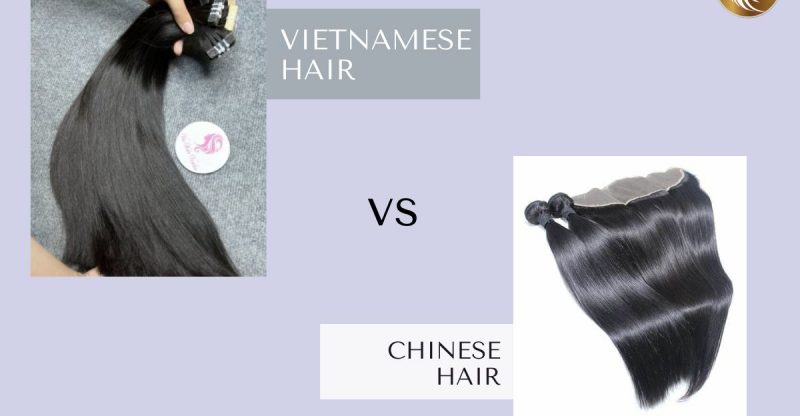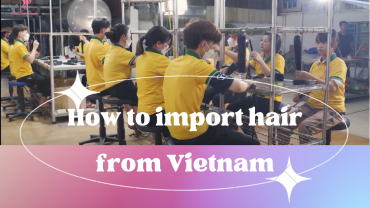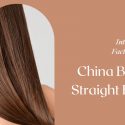Comparing Between Vietnamese Hair Vs Chinese Hair
Contents
Hair is primarily exported from China and Vietnam. In certain cases, it could be challenging to locate the most suitable hair provider to collaborate with. Which one of these choices is best? If you’re trying to decide between Vietnamese hair vs Chinese hair, this post will provide you with the details you need to do so.
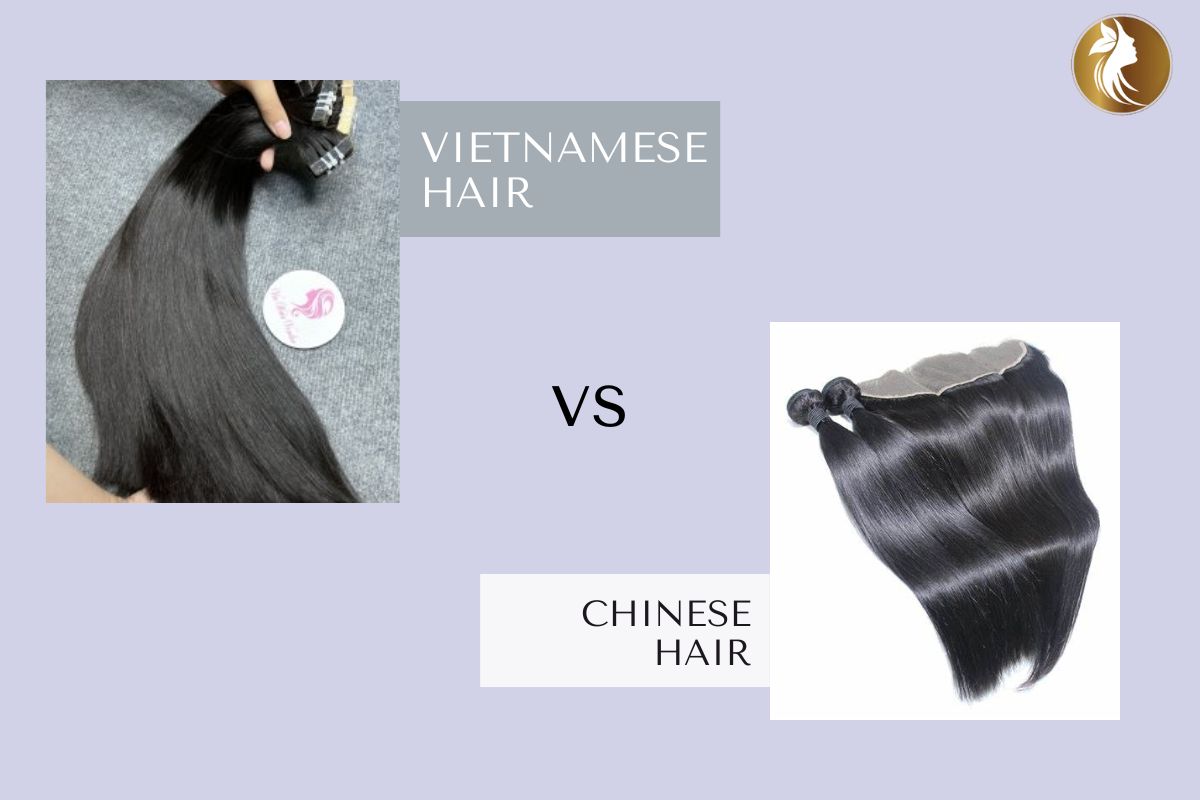
Comparing Between Vietnamese Hair Vs Chinese Hair
1.Vietnamese hair vs Chinese hair – Standards for Contrast
It is feasible to contrast Vietnamese hair vs Chinese hair using a wide variety of factors; in this post, we will focus on a few of the more important ones.
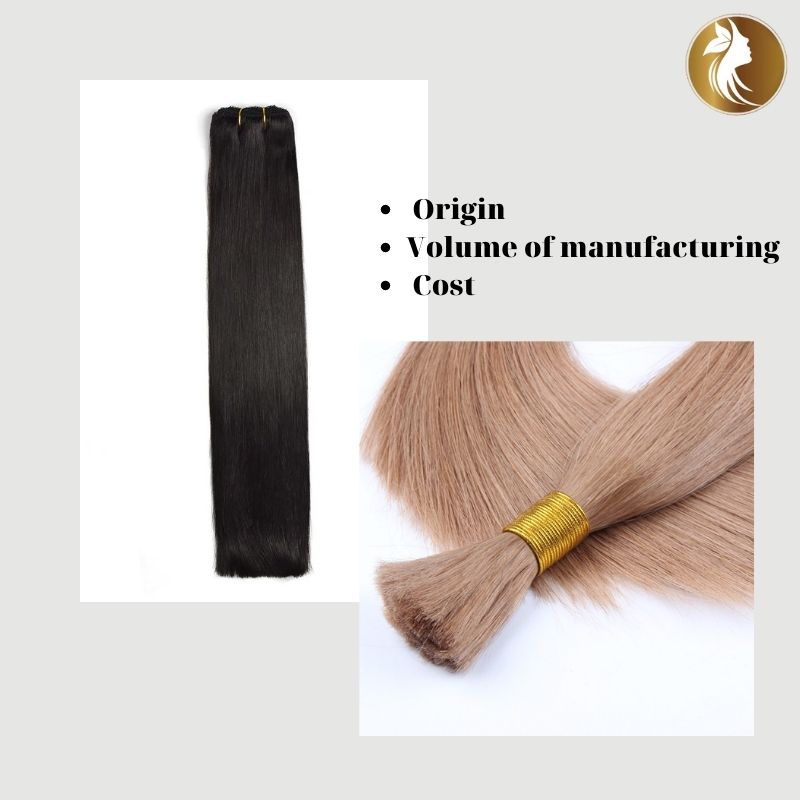
Vietnamese hair vs Chinese hair – Standards for Contrast
Whenever evaluating Vietnamese hair vs Chinese hair, the country of origin is a crucial factor in determining the true quality of each option. Clients will feel more confident in your items and more likely to buy from you if you are transparent about where they came from.
Volume of manufacturing: In order for a business arrangement to survive, it is essential that there be a steady supply of goods and services that can fulfill the needs of all customers. Therefore, when deciding whether or not to collaborate with them, it is crucial to think about manufacturing scale.
To properly assess a business, quality must be taken into account. Clients will return if the product or service is of high quality.
When comparing the relative merits of Vietnamese hair vs Chinese hair, one cannot overlook the issue of cost. Sales and income are both improved by a price that is both fair and competitive.
2.Vietnamese hair vs Chinese hair – Where Hair Came From
Opportunities abound in the multibillion dollar global hair industry. Particularly dynamic in this regard are the economies of Vietnam and China. There is a difference between Vietnam and China hair. Hairstylists everywhere are befuddled by them. For starters, let’s figure out: compare the Vietnamese and Chinese hair origins below
2.1. How Vietnamese Hair Got Its Start
100 percent of the hair used to make Vietnamese hair comes from women in the nation’s highlands, and they span the age spectrum from 18 to 30. Since tyrosine (the ingredient that keeps hair soft) is most concentrated in the hair of women of this period, Vietnamese hair remains velvety soft even when it is processed.
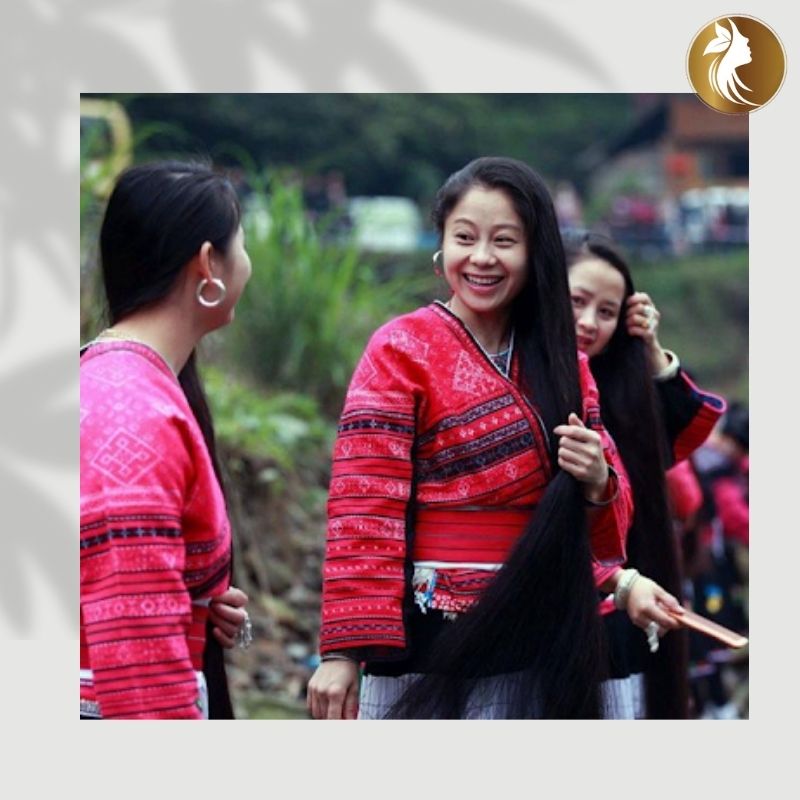
100 percent of the hair used to make Vietnamese hair comes from women in the nation’s highlands
Vietnamese hair often falls into one of two categories: Virgin hair and Remy hair. Virgin hair is the best grade hair available because it comes from a single donor. The term “Remy hair” refers to hair that has been obtained from two or more donors that have very identical hair characteristics. As a result, this is the most common variety of Vietnamese hair exported.
2.2. How Chinese Hair Got Its Start
In order to make an informed decision while weighing the merits of Vietnamese hair vs Chinese hair, you should know the following.
- Approximately decade ago, Chinese hair came from Chinese women; however, as China has become more urbanized, the number of women who trade their hair has reduced dramatically. Therefore, Chinese hair merchants have made the trip to Vietnam to stock up on supplies. The ability of Vietnamese businesses to market on their own has led to the cessation of this practice.
- Present-day Chinese hair is a fusion of many different ethnicities’ products, most commonly from India, Vietnam, and Cambodia but also from other nations including Myanmar, Bangladesh, and Pakistan.
Compare and contrast Vietnamese hair vs Chinese hair, the origins of which are more transparent in the former case than in the latter due to the proliferation of trademarks among Chinese hair products. Therefore, if you value transparency in goods provenance, Vietnamese hair is the way to go
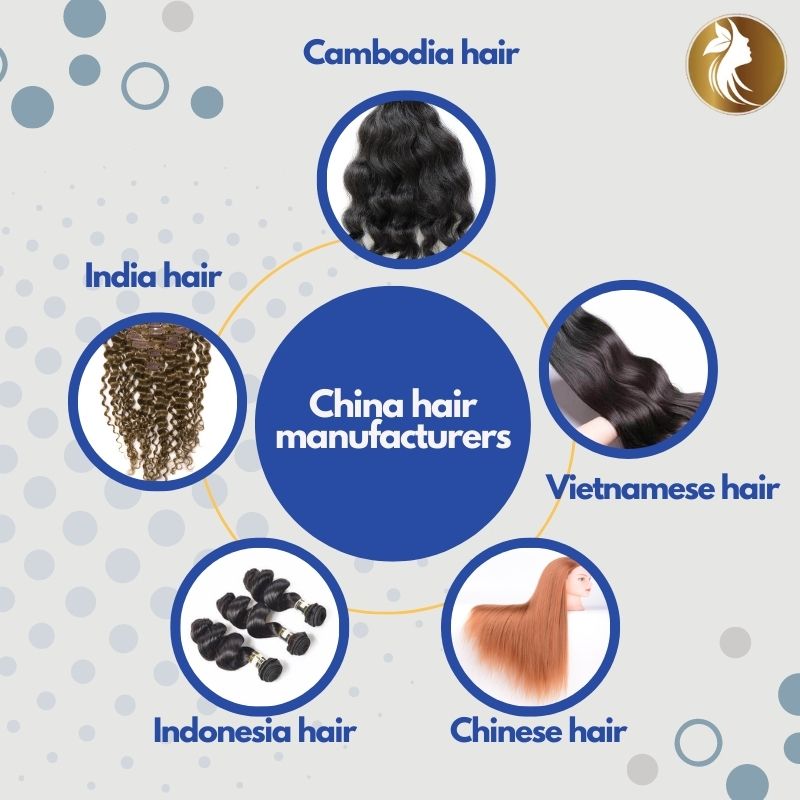
Present-day Chinese hair is a fusion of many different ethnicities’ products.
3. Comparison of Vietnamese hair vs Chinese hair manufacturing scales
In response to, “What is the difference between Chinese and Vietnamese hair?” Or the dissimilarity seen between hairstyles of Vietnam and China . The company’s output volume is a key differentiator between Chinese and Vietnamese hair.
In most people’s minds, when they hear the term “factory,” they picture enormous, factory-like structures. Chinese hair factories are affected, but not Vietnamese ones.
3.1. Vietnamese hair manufacturing scales
Vietnam’s hair producers aim for manageable production volumes so they can keep tabs on and improve their goods.
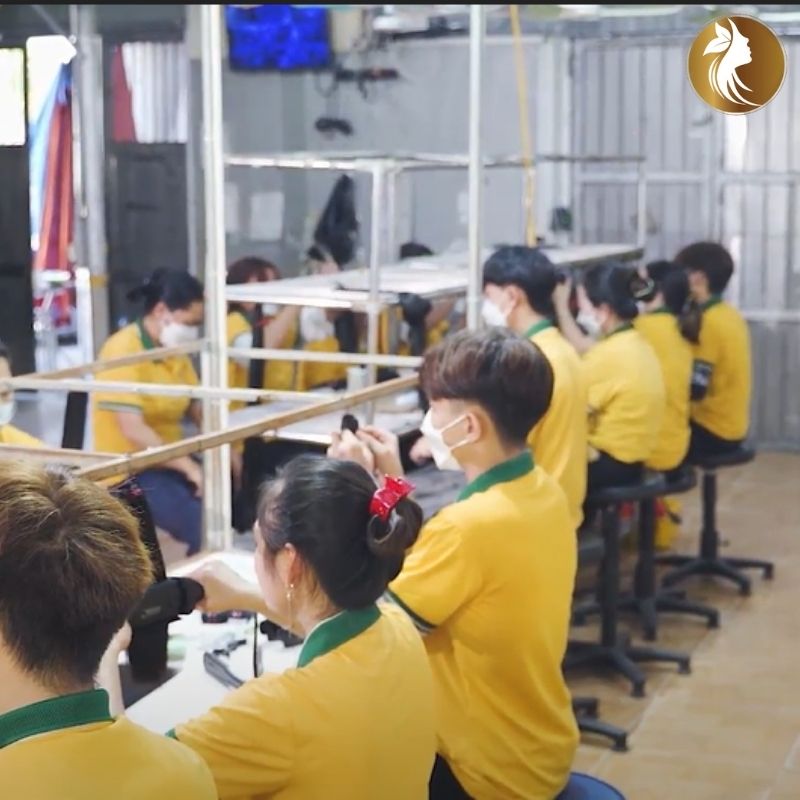
Vietnamese hair manufacturing scales
The production of hair is a major industry in some of the small settlements. Many members of the family are employed by or otherwise involved with these businesses. Ample supplies of hair are not now on hand. The factory only makes new hair when getting ready to ship overseas. This means that Vietnamese hair is always healthy and fresh. While Vietnamese hair isn’t mass-produced on the same scale as it is in China, the beauty of each strand is always noticeable. If you’re trying to decide between Vietnamese hair vs Chinese hair, I believe this is among the most crucial distinctions to make. Anyone in a hurry who needs a hair extension should not use Vietnamese hair.
With increased productivity, Vietnamese hair companies have narrowed the difference in product preparation time between Chinese and Vietnamese hair.
3.2. Chinese hair manufacturing scales
Everyone knows that China is a major world leader and home to the largest industrial sector. This nation boasts the most cutting-edge manufacturing facilities and machinery in the world.
- When it comes to hair, everything can be made by hand for optimal grade, yet Chinese hair manufacturers use commercial production and the latest technologies in the hair business to crank out an enormous quantity of hair extensions which is always in supply.
Chinese hair is mass-produced on an economic basis daily, supplying international hair distributors and retailers. After receiving an order, Chinese hair sellers can quickly and easily have their wares delivered to the buyer.
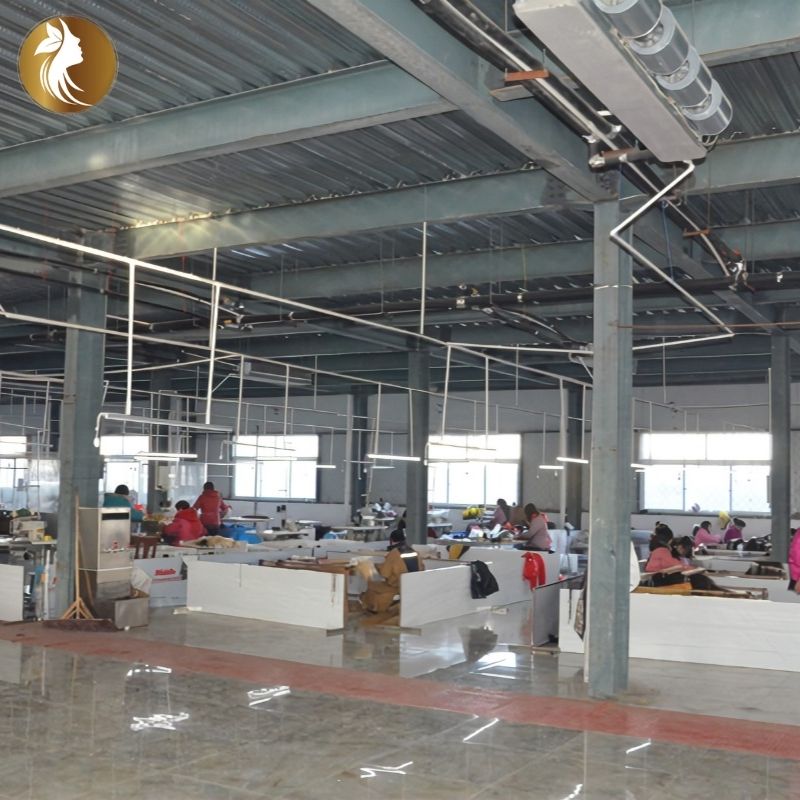
Chinese hair is mass-produced on an economic basis daily, supplying international hair distributors and retailers.
- China’s big and inexpensive labor pool is a major asset that has helped the country expand its manufacturing capacity.
- Hair integrity and quantity are hard to ensure because of mass manufacturing and the lengthy storage time required for the hair.
Compare and contrast Vietnamese hair vs Chinese hair, keeping in mind that the former’s quality is secured regardless of the latter’s manufacturing. The manufacturing in China involves extensive utilization of chemicals; as a result, product quality should be taken into account.
See more about:
The Best Human Hair Manufacturing Companies In China
Things Must Know About China Hair Factory In GuangZhou
4.Comparing the cost of Vietnamese vs Chinese hair
While deciding between Vietnamese hair vs Chinese hair, affordability is an important consideration that should not be ignored.

Comparing the cost of Vietnamese vs Chinese hair
- In latest days, Vietnam has seen a dramatic reduction in manufacturing costs . For this cause, you may buy high-quality hair at a cheap price in Vietnam.
- Since Indian hair is the key source for Chinese hair, the added cost of transporting it from India to Vietnam and then from Vietnam to China is reflected in a higher retail price. Since China and India have border disputes and ideological disagreements, it is difficult to sell goods like hair to China without going via a third country.
- In addition to its exceptional quality, Vietnamese hair is also noted for its affordable rates. Priced as low as $8 per weft bunch, $12 for clip-in extensions, and $ 33 for a wavy hair closure. 4*4…
- China’s hair manufacturers are famous for their high output rates, large labor pools, and cutting-edge machinery. This is why the price of hair on the Chinese market is seen as attractive. Prices start at around $7 for a weft bundle, $11 for Clip-in extensions, and $31 for a wavy hair closure. 4*4…
Compared to Chinese hair, Vietnamese hair is a little more costly, but given the higher quality, the price difference is negligible.
How Vietnamese hair vs Chinese hair differentiate in grade
The quality of the hair also plays a role in determining its price. Single-drawn hair, double-drawn hair, and super-double-drawn hair are the three primary categories of Vietnamese hair. There are ten different grades for Chinese hair: 5A, 6A, 7A, 8A, 9A, and 10A. Less shedding and tangles can be expected with higher grade hair.
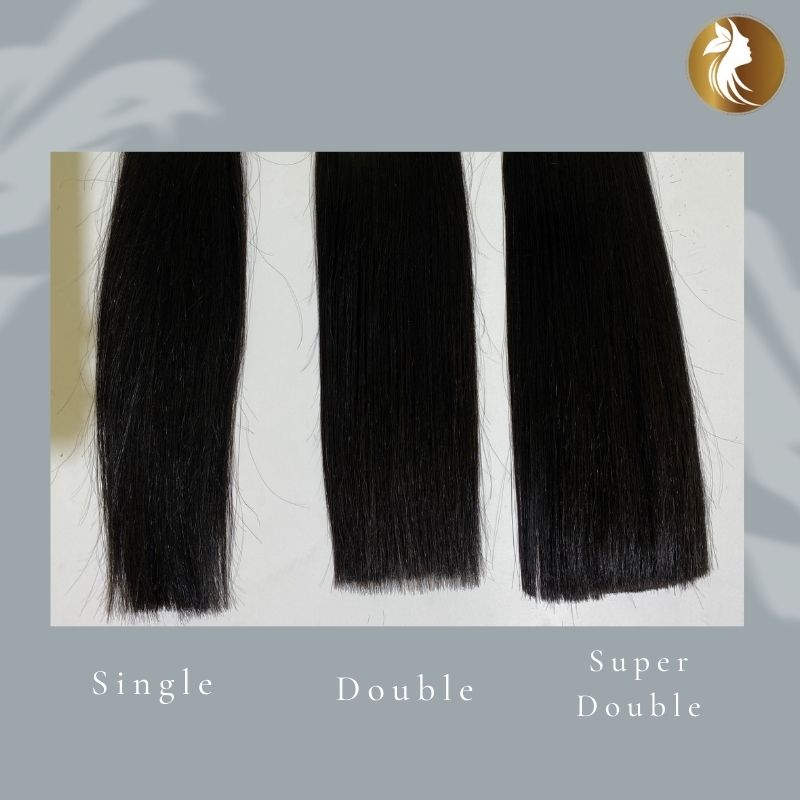
Single-drawn hair, double-drawn hair, and super-double-drawn hair are the three primary categories of Vietnamese hair
In order to categorize various types of hair, we employ the aforementioned terminology. The volume and length of the hair determine the intensity.
- Chinese grades 6A and 7A are equivalent to the quality of single-drawn hair. This indicates that between fifty and fifty-five percent of the hair has a uniform length, with the remainder being a variable length.
About half to two-thirds of a 16-inch bundle of hair will really be 16 inches in length, whereas the rest 60% will be a combination of shorter lengths (10-, 12-, and 14-inches). Once you run your fingers through hair of this quality, you’ll find that the roots are denser than the ends.
- Double-drawn hair is the equivalent of 8A and 9A quality in China. In other words, anything from seventy percent to seventy-five percent of the hair is the same thickness, while the remaining five percent or so is a gradual transition.
- The quality of super double-drawn hair is equivalent to the Chinese 11A grade. What this implies is that 90%–95% of your hair is the identical length, while the other 5-7% is a seamless mix.
Vietnamese hair grades are more straightforward than their Chinese counterparts for understandable reasons. It could be confusing for beginners to distinguish between the many grades of Chinese hair because they all appear to be identical.




